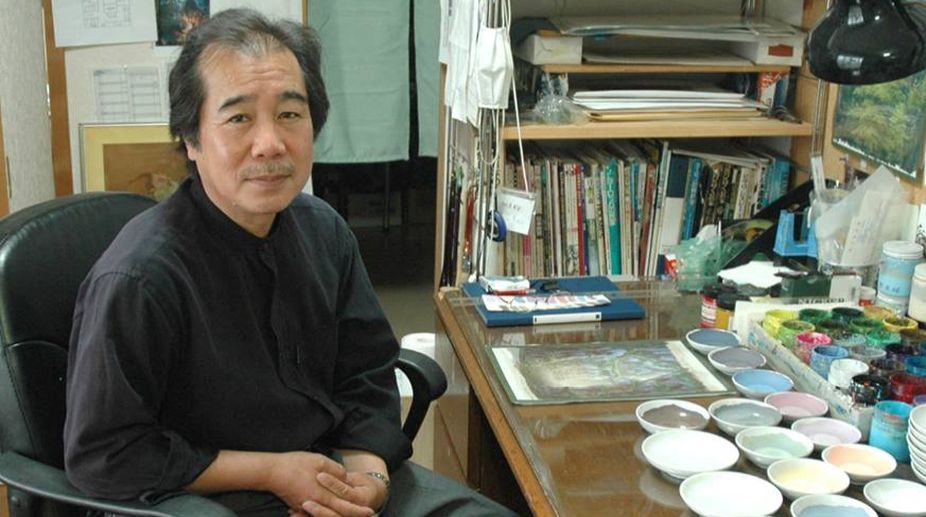Rashmika Mandanna makes India proud at Crunchyroll Anime Awards
Indian actress Rashmika Mandanna to present at Crunchyroll Anime Awards 2024 in Tokyo. Representing India, she joins global celebrities for the prestigious event.

Nizo Yamamoto (Photo: Facebook)
Characterised by rich visuals and vibrant colours, Japanese animation — known as “anime” to the rest of the world — stands apart as a distinct art form. In the loud and often in your-face visual aesthetic of these times, the best animators in Japan adhere to a philosophy of soft and gentle scenes, which are easy on the eye. And one of the finest practitioners of the form is 64-year-old Nagasaki-born Nizo Yamamoto.
Yamamoto studied architecture but gave it up to pursue his love of animation. Thereafter he met pioneering director Hayao Miyazaki at the iconic Studio Ghibli. He has served as an art director on some of Japan’s most enduring animation films —Laputa:Castle in the Sky (1985), Grave of the Fireflies (1988), Whisper of the Heart (1995), Princess Mononoke (1997), Spirited Away (2001) and The Girl Who Leapt Thro-ugh Time (2006). The Yamamoto Nizo Museum will be opened in his hometown, Goto in Japan’s Nagasaki Prefecture next year.
During his first exhibition abroad in New Delhi, he spoke about his most memorable works, hand painted animation and depicting a realistic beauty.
Advertisement
Excerpts from an interview:
What made you choose animation over architecture?
I’ve always loved painting. When I was a student, I had a chance to work at an animation studio. And since then, I’ve been in the world of animation.
Who/what were your influences when starting out?
The master named Kazue Itoh. He was my mentor and introduced me to director Hayao Miyazaki
Two films that stand out artistically are Grave of the Fireflies and The Girl Who Leapt Through Time. What were the challenges of working on them?
As art director of Grave of the Fireflies, I visited Kobe to collect reference material together with writer Akiyuki Nosaka and director Isao Takahata. During the preparatory stages of the production, I had to paint the flames and smoke for the air raid scenes, including the colours and patterns of the sky.
So I had to study those under the supervision of Takahata. I sometimes had to paint through tears, and often felt that I could not stand to paint all that. Nonetheless, I made a reconstruction of the rows of houses and nature, and landscapes of the era. When Nosaka saw the movie, he shouted out, “This is what animation is all about!”
It was an especially memorable movie for me as well. In The Girl Who Leapt Through Time, I made complete blueprints for the house in order to imagine better how different families live.
In that way, the viewers sitting on the other side of the screen can feel the reality of the world of the characters and empathise with them. Additionally, with complete drawings, it was easier to decide where to place the camera to obtain the right angle.
On top of that, the quality of the light changes according to the time of day and the characters’ emotional state. In that sense, the work of the art director ties together the work of props management, lighting and camera work that we have in live-action productions.
You began when animation was rendered by hand. Where do you stand on the digital versus hand-painted divide?
Personally, I’m not good at digital devices. I tried once but I couldn’t feel I’m drawing properly.
The use of light in the background is another distinct feature of Japanese animation. How important is it as a visual and storytelling component?
If a background is really good, it’s taken for granted —viewers can ignore it and just immerse themselves in the world of the movie. If it’s bad, they can’t help noticing it, and lose their concentration. When we remember the good times in our lives, we always remember the background as beautiful, even if we didn’t pay much attention to it at the time. That is the kind of realistic beauty that I want to depict.
Do you believe animators should get as much as respect as mainstream artists?
Yes, I do believe that should be the case.
Do tell about the works on display in the exhibition.
This exhibition introduces my best works including beautiful landscape paintings from Grave of the Fireflies, Princess Mononoke, The Girl Who Leapt Through Time and many more. Also, I would like to show the beauty of Goto, my hometown in Nagasaki.
What are your future projects?
I’ve been painting 100 beautiful scenery of my hometown, Goto. I’ve got nearly 50 as of now and I’m looking forward to finishing it!
Nizo Yamamoto’sexhibition,“The World of Japanese Animation”, is on till 17 November (11 am-7 pm) at The Japan Foundation, New Delhi.
Advertisement